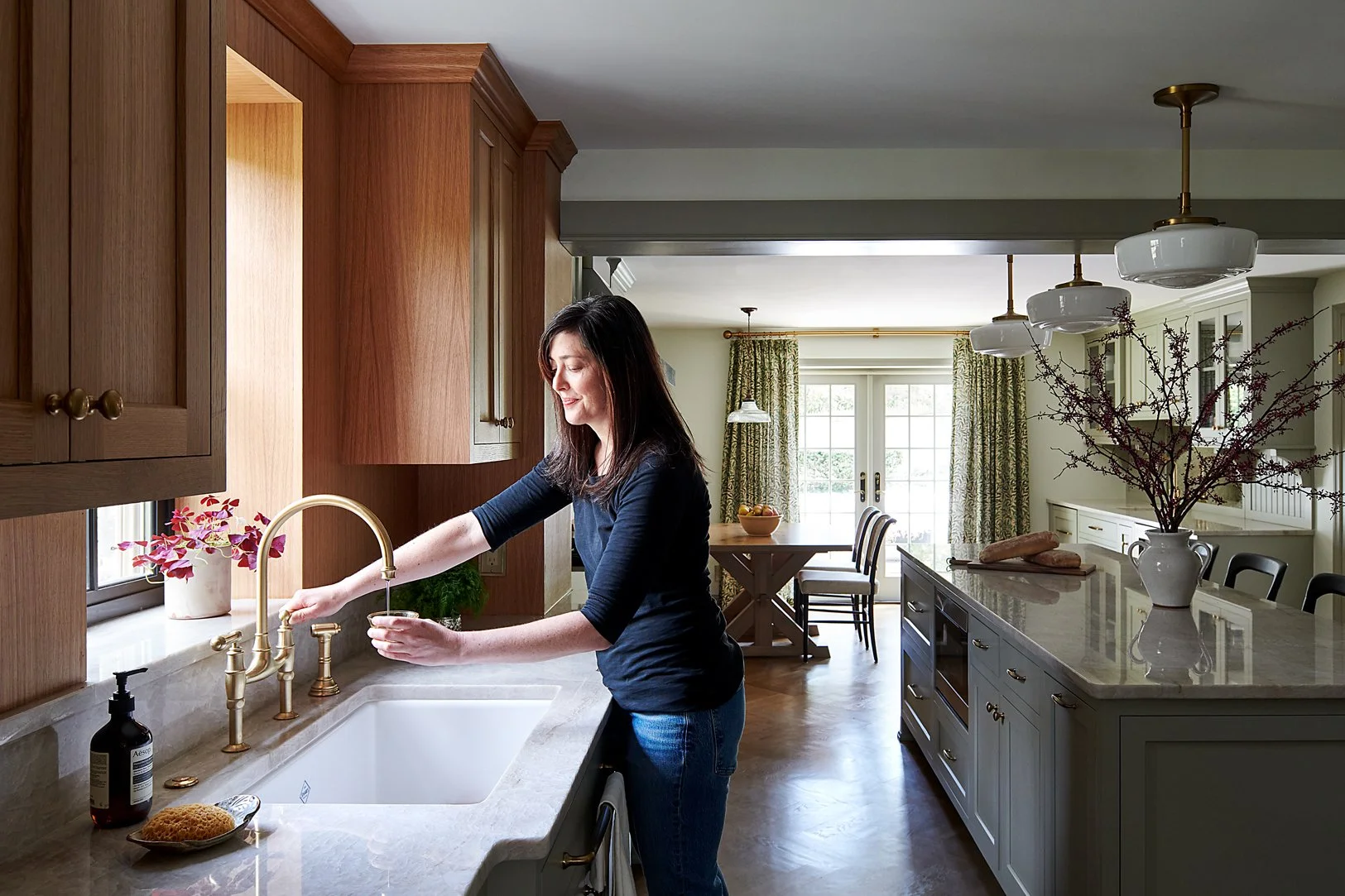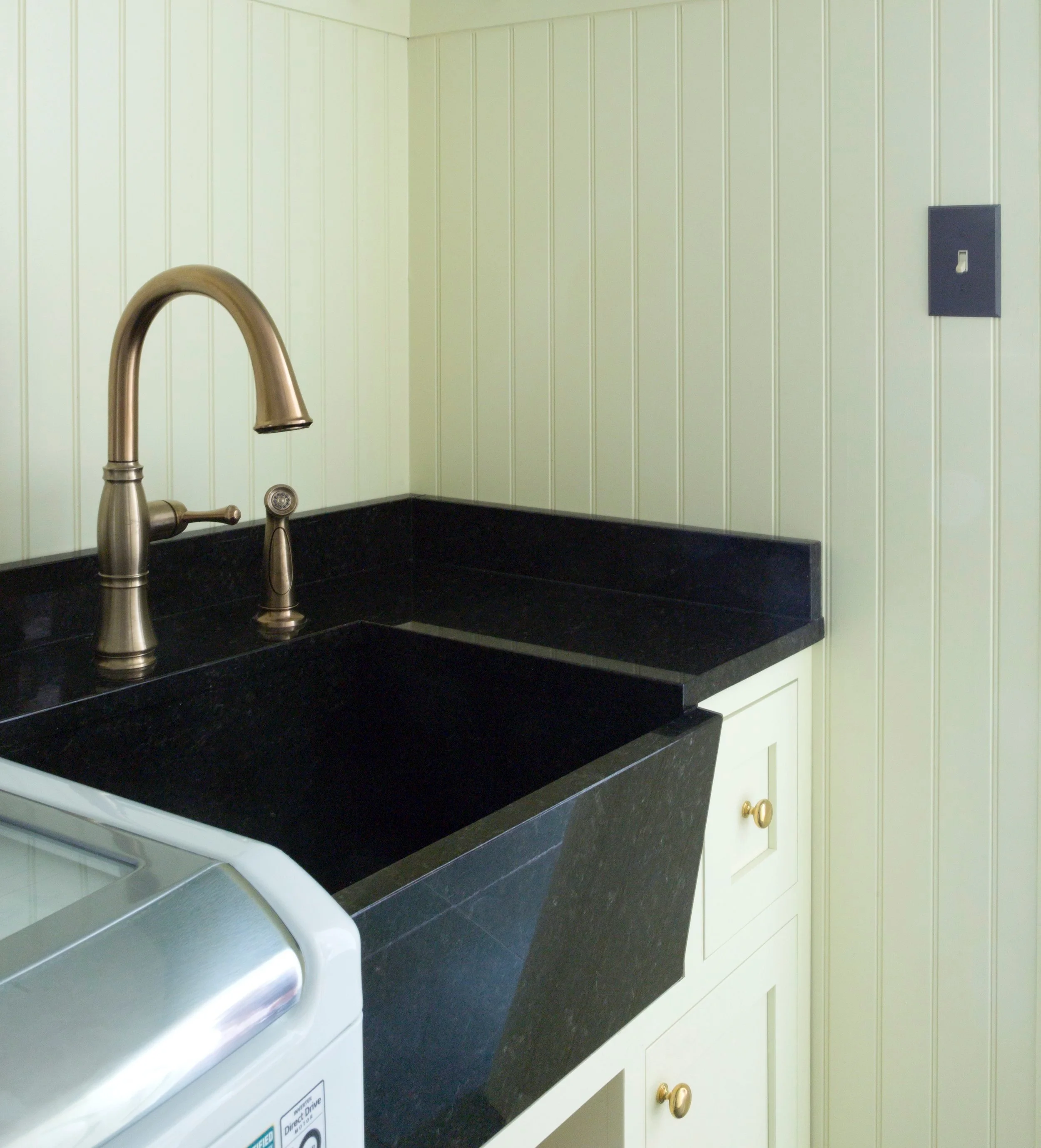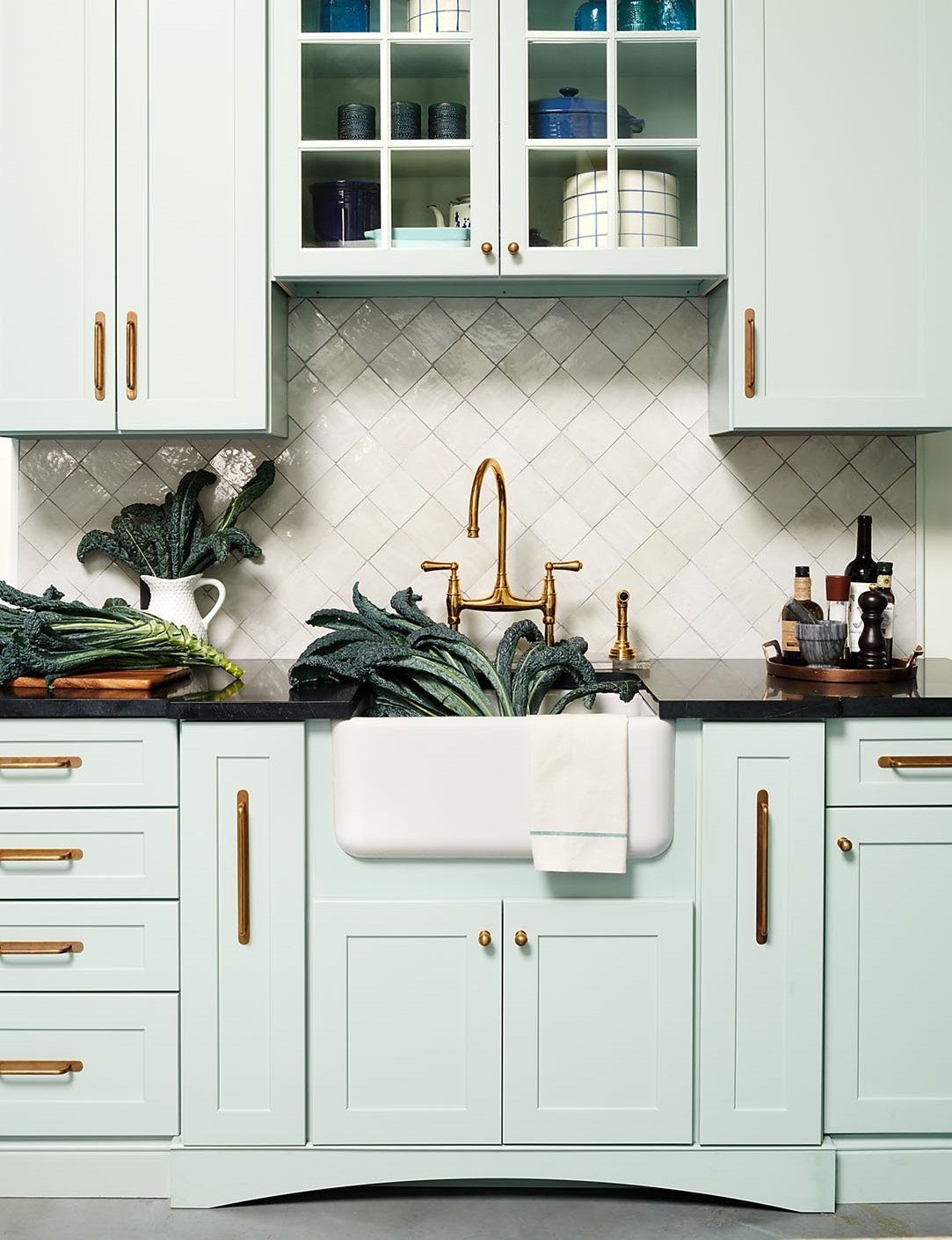There are many factors to consider when choosing a sink and every homeowner has different needs. We recently had an artist client who wanted a white bathroom sink that wouldn’t stain when he washes out ink pens. In the kitchen, many of our foodie clients worry about turmeric or beets staining their sinks. They want to know which sinks are strongest against dings and scuffs. Some areas around Philadelphia have mineral-rich hard water, which can also lead to stains. Our interior designers always want to create the best rooms for our clients, so we did the research to find which sinks are the most stain resistant. Let’s start in the bathroom:
Porcelain Sinks (non-vitreous)
Porcelain is a strong ceramic that is manufactured at high temperatures and glazed for a durable and glossy finish.
Porcelain is non-porous and therefore resistant to stains and moisture absorption.
Porcelain sinks are typically more budget friendly than other ceramic options and are offered in many color options.
Keep in mind, this material is more susceptible to stains, chips, and cracks than vitreous china or fireclay.
Tip: Sealing your porcelain sink can help avoid stains and a dulled finish.
This Lower Merion bathroom features a vitreous china sink.
2. Vitreous China Sinks
Vitreous china is a porcelain base with a durable enameled glaze that results in stronger protection than glazed porcelain.
This material is fired at high temperatures, creating a smooth, non-porous, and high-gloss finish.
While durable, vitreous china can still be vulnerable to chipping and scratching if not carefully handled.
This material is more often used for bathroom sinks than kitchen sinks. Toilets, bathtubs, and basins can also be manufactured with this durable material.
Tip: Vitreous china is one of the top options for stain resistance.
This Lower Merion Kitchen features a fireclay sink paired with custom cabinetry.
3. Fireclay Sinks
Fireclay is a type of ceramic that has a glazed, non-porous quality. It is fired at higher temperatures for more durability and heat resistance.
This material is resistant to wine, oils, acids, and scuffs.
A fireclay sink can become an heirloom with the right care, making it a great long-term investment.
These sinks are heavy and will require reinforcement inside cabinetry.
The aesthetic of fireclay sinks lends itself to farmhouse and craftsman homes.
Tip: Our clients found fireclay sinks to be more scuff resistant than enameled cast iron.
This Ardmore Eclectic Kitchen features an enameled cast iron sink and a scalloped backsplash.
4. Enameled Cast Iron
Enameled cast iron sinks are covered with a layer of vitreous enamel that is fused to the cast iron at high temperatures.
Glazed coating protects the sink from stains and rust, making it non-porous.
Structural reinforcements may be needed to support the weight of an enameled cast iron sink.
In some cases, high-end enamel coatings can be less porous than the glaze used on fireclay sinks, leading to a higher level of stain resistance.
Due to its strength and heat retention, cast iron is a popular material for wall mounted sinks and bathtubs.
Tip: The cast iron underneath the glazing is porous, so the risk of chipping can lead to permanent damage, including staining. If rust or cracks develop, it can typically be repaired with a new enamel coating.
A granite sink complements this Wynnewood project.
Natural Stone and Granite Composite Sinks
Quartz and granite composite sinks, made from natural stone and resin, are engineered to be non-porous and durable.
A composite surface can give the appearance of natural materials and be more resistant to stains.
Completely natural stone sinks require sealing to resist stains, due to their porosity.
Soapstone naturally has low porosity and often does not require sealing.
Cleaning a natural stone sink can be more meticulous than cleaning a stainless steel or fireclay sink.
The aesthetic of stone lends itself to contemporary and eclectic homes.
Tip: Natural and composite materials are less stain resistant than stainless steel or fireclay, but a darker color sink can be more forgiving.
Visit our Mount Airy Showroom to see this fireclay sink.
Final Thoughts
A sink should be chosen based on your needs and what fits best with your home decor. As an interior design firm specializing in kitchens and bathrooms, we examine the function of all materials and consider which items look appropriate in historic homes or contemporary construction. We educate our clients during the design and project management phases on the longevity and durability of each feature. As long as you remain informed about the necessary maintenance and risks, each sink material listed above is a great choice for daily use. If you could use a designer's eye to help you make the best decision, consider starting a design.






